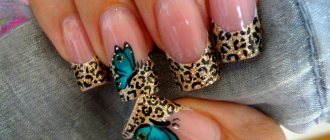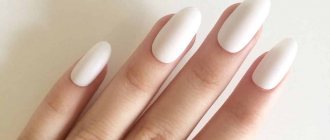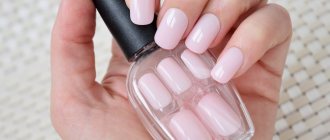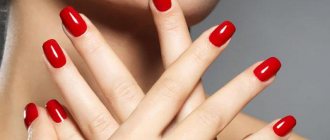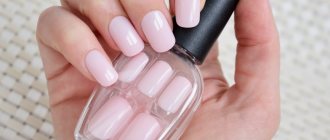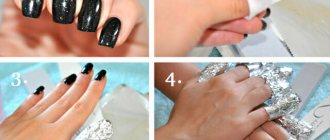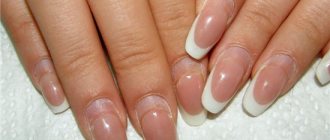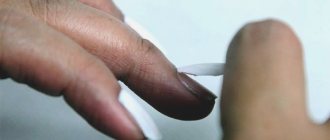In the struggle for beauty, girls use a lot of tricks. False nails deserve special interest. They are used by fashionistas to artificially increase the length of a natural plate and correct its shortcomings. These nails look natural both in photos and in reality. How these devices are used and why they have become so popular will be discussed in our article.
Fake nails
The accessory itself is made of a technologically created material that is very reminiscent of plastic. It does not deform under the influence of glue and can withstand sufficient mechanical damage.

False nails are attached to the nail plate using a special glue that is as harmless as possible to human health. But many also glued their nails with superglue, which is a very dangerous activity.

Using superglue
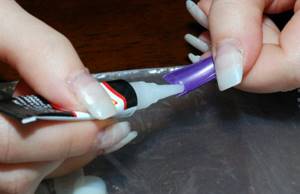
It is not recommended to use superglue for such purposes; it penetrates through the scales into the nail plate and causes great harm. There is also a point that if it gets on your hand, it is simply impossible to wash it off, and it is also worth thinking about how you can then remove the nail after this glue. But if you still have the following question: “What glue should I use to glue false nails?”, and there are no options other than superglue, then you should follow some tips:
- Firstly, there is no need to degrease it with anything; this layer will at least slightly protect the plate.
- Secondly, you need to apply the glue itself to the tips, again, this will be done for safety.
- And thirdly, you should not press hard and hold the tip for more than three seconds.
To remove false tips that were glued with superglue, you need to follow the following instructions:
- You need to hold your fingers in water, the temperature of which is more than 45 degrees, for about 15 minutes. The glue should soften, and to remove the tip, you need to pick it up with a sharp object from the side of the cuticle.
- There is a solvent for nail glue; a regular one will not work. It comes in the same form as regular polish. It should only be applied to areas with adhesive, avoiding delicate areas of the skin.
After removing the nails, the cuticles must be treated with moisturizing oil and some kind of medicinal product applied.
What are the types of false nails?
If previously the types were limited to the same type of plastic nails, which were sold in an elongated form, which made it possible to trim them at will, now various models can be found on sale.

The most popular of them:
- French manicure;
- Nails with different types of shapes: oval, almond-shaped, square, round, sharp and textured;
- Solid, multi-colored, holographic, glitter, neon and printed options.
How to glue nails without glue
If you find that the kit does not include special glue, and you no longer have time to run out to buy it, then you can easily glue false nails without glue onto clear varnish. For this:
- Natural bases are prepared - the length is cut, the cuticle is processed.
- Degrease the surface.
- Apply clear varnish and immediately apply an artificial base, press down.
Press each overlay base for at least two minutes for better adhesion.
Tips with an already applied sticky layer are available for sale. For application you will need:
- Remove any remaining old varnish.
- Prepare the base.
- Degrease the natural plate.
- Remove the protective film from the overlay material.
- Connect surfaces.
This option is harmless to health, but impractical.
What you need to apply false nails

False nails are very simple and easy to apply at home, even if you are new to such things. Here you just need to stock up on the necessary materials and tools that will help you in the process.
You'll need:
- The nails themselves (the desired shape and length);
- Nippers (for cutting off excess nail length);
- Acetone (for degreasing);
- Glue (for gluing the glue to the nail);
- Highly abrasive file (for filing cut edges of nails);
- Varnish (for covering feet).
Remember! That the choice of glue must be careful. Glue usually comes with false nails, but sometimes you have to buy it separately. The glue must be clearly designed for such an action, otherwise it can cause harm to the nails and the entire body as a whole.

Advantages of plastic linings
The widespread use of plastic linings has a number of advantages:
- When used correctly, they do not cause significant harm to health.
- The material is quite strong, if glued correctly it will last a long time and withstand minor mechanical damage.
- To give your fingers a beautiful manicure, you do not need to visit a salon; you can probably do the work of gluing the overlay material yourself at home.
- To correct the shape, it is enough to use tweezers or a nail file.
- The artificial material will hide unevenness and damage to the natural nail plate.
- The shade is chosen independently.
- The varnish coating lasts longer on artificial nail surfaces than on your own, since they are perfectly smooth, without flaws.
How to glue false nails
If your manicure is in order (cuticles are cut, nail ridges are processed, and all hangnails are removed), then you should immediately proceed to the process of preparing false nails. Apply a little acetone to a cotton pad and wipe your nails with it to degrease the nail plate.
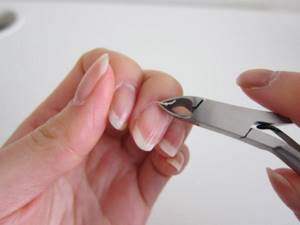
Next, apply a little glue to the nails and apply it tightly to the nail, with the bottom edge tightly resting against the line of the cut cuticle. Press the false nail firmly over the entire surface. Using a similar method, we glue on all the false nails, and then use pliers to cut them to the required length.
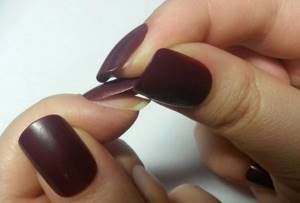
To remove the sharp edge of the cut, you need to sand it with a nail file. Next, degrease everything with acetone and apply varnish to the false nails.
How to glue tips at home
No special equipment is needed. To glue your nails yourself at home, you need a minimum cost and a minimum set of tools. You will need:
- fake nails;
- glue for false nails (mostly it comes in a set);
- a napkin or an unnecessary towel to remove excess glue;
- set of manicure tools;
- a product that will help degrease the nail plate;
- a container where you can pour hot water.
It is imperative to remember that if there is any infection on the nails, then gluing can greatly worsen the course of the disease.
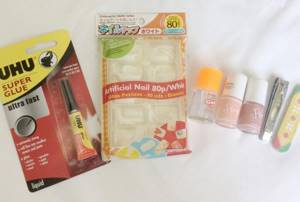
First, you need to wipe off the remnants of the old polish, if any, and then do a manicure with cuticle scissors. It is advisable to cut off everything unnecessary around the nail. Most false tips come in a standard size, so you may need a file to file them to the desired size. They should completely cover the nail plate, not go beyond, but not be smaller. Don't forget to coat the inside of the artificial nail with degreaser to ensure good adhesion. The tips can be coated with colorless varnish on top.
After the preparatory procedures, you need to apply glue for false nails and immediately attach them to their own plates.
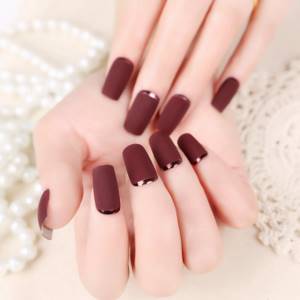
The most important thing is that the artificial nail sticks the first time, because the glue sets instantly, and then re-gluing the tip will be quite problematic. But still, if you couldn’t do this right away and the tip remained on the nail plate, then you can remove it by dipping your finger in hot water and holding it there for about 10 minutes. As the girls write in the comments, the glue quickly softens after such a bath, and removing the nail will be a piece of cake. The remaining adhesive will need to be removed with a solvent; cutting off is not recommended, as the top layer can be damaged. After this, dry the nail and repeat all the procedures again.
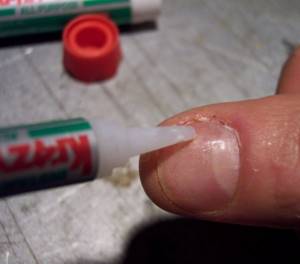
How to care for false nails
False nails, unfortunately, are not a panacea for constant care. Wearing them constantly is not recommended. Use artificial nails only when necessary - for parties or other significant events when you need to look perfect.
Inspect your false nails periodically to spot any cracks or peeling on your natural nail. If you find damage, you should immediately get rid of false nails and re-stick them no earlier than in a month.
It is important to expose hands with false nails to water and chemicals as little as possible. Moisture that gets under artificial tips contributes to the formation of mold and mildew, which can significantly affect your overall health.
Overlay plates are a great opportunity to quickly transform short, unattractive nails into a beautiful and sophisticated manicure. Extended nails will help if you are going to a gala evening, prom or wedding, but you should not abuse this achievement of the nail industry, because the main trend of the season is still considered the natural length and natural appearance of nails.
How to glue your nails so they last a long time
You always want beauty to last longer. Do not forget that when wearing artificial false materials, you need to take breaks to keep your own nails healthy.
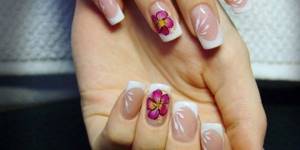
But in order for the use of overhead products to be enjoyable and not to worry that they may fly off, you need to take into account some points when working and wearing:
- A layer of varnish is applied between the natural base and the adhesive layer; it will provide better adhesion.
- Do not apply the overlay form close to the cuticle; you need to retreat up to 2 mm.
- If, after a few days, unsteadiness of the forms is noticed, then exposure to heat, for example, with a hairdryer, is necessary. When heated, the adhesive layer will resume its properties.
- Use gloves when doing housework.
